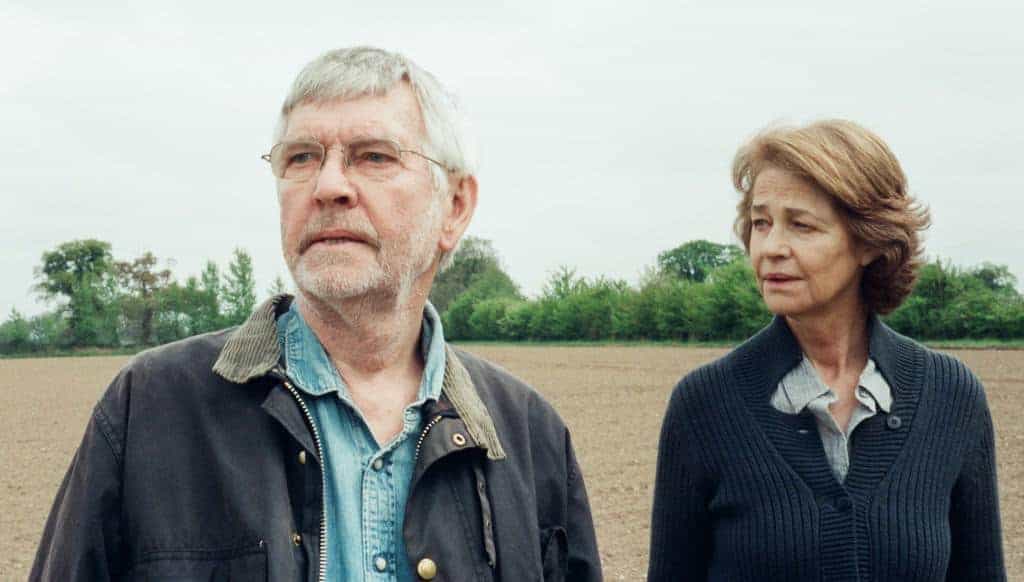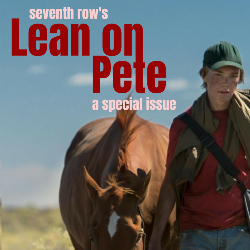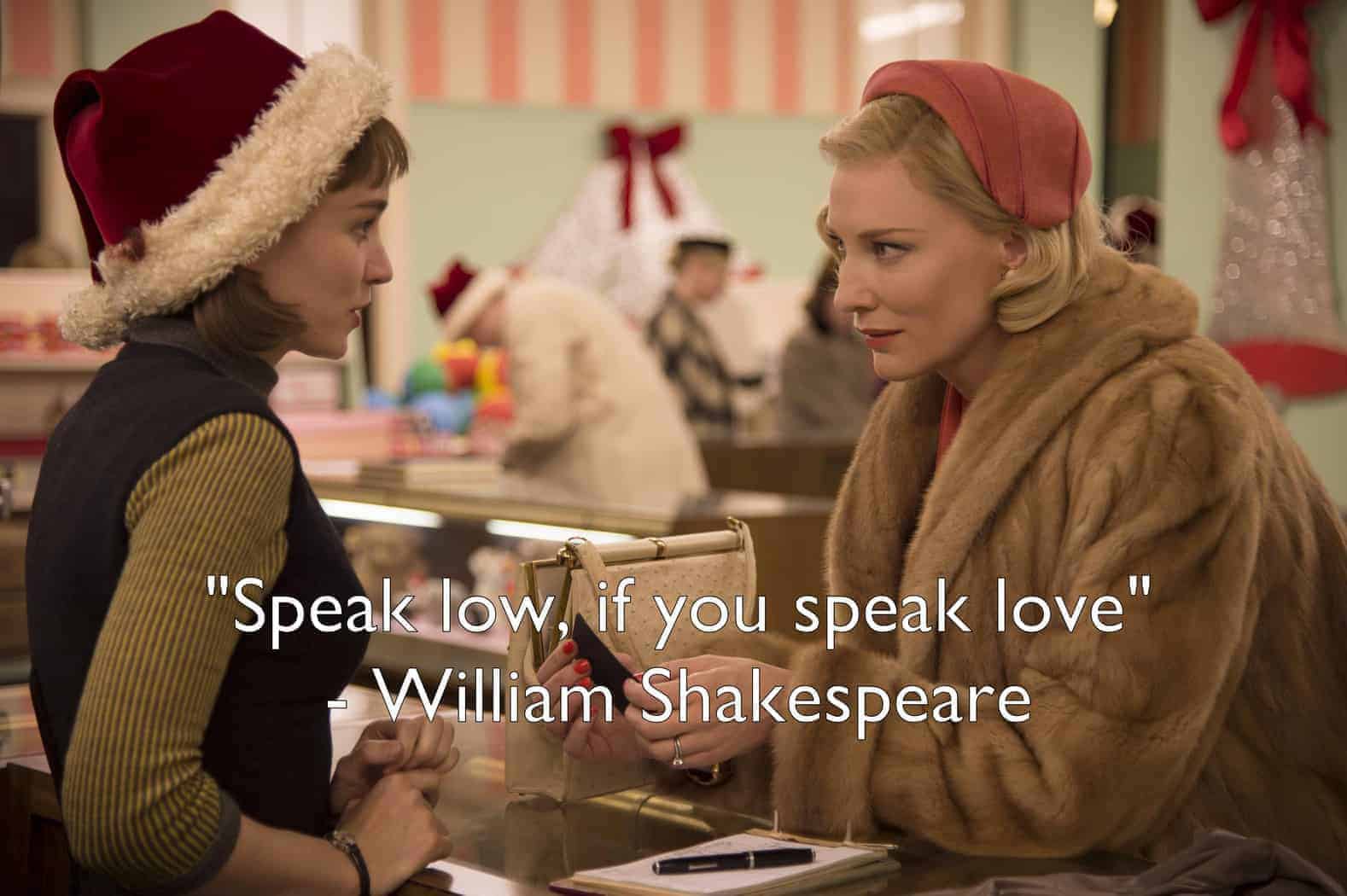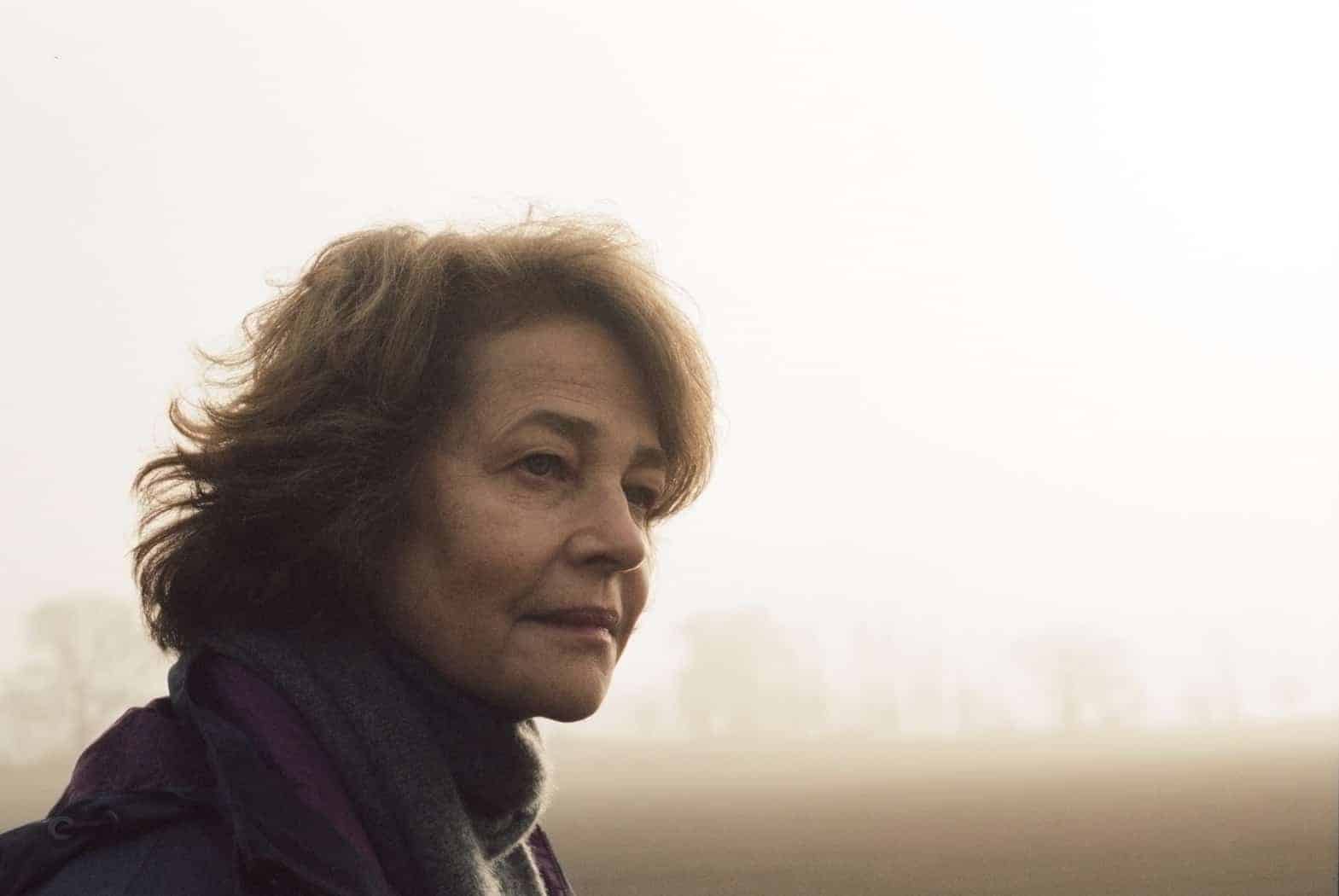In this interview, Andrew Haigh discusses 45 Years, shooting long takes, keeping us in Kate’s head space, and editing the film before the editing room. You can read our review of 45 Years here. We have also published a book on Andrew Haigh’s Lean on Pete, which you can find out more about here, which features interviews with Haigh and his key collaborators, plus a look at how his films explore characters’ relationships with their homes. Get your copy of the ebook Lean on Pete: A Special Issue here.
Read more: Review of 45 Years >>

Between 45 Years and Looking, Andrew Haigh has written and directed one of the best films and the best television series of 2015. Both works expand on his interest in stories about romantic relationships and intimacy, previously explored in his Criterion-minted Weekend — sometimes referred to as the gay Before Sunrise. Both show his knack for directing precisely blocked scenes in long takes and getting great performances out of his actors. Haigh’s scripts and direction are wise and precise.
In 45 Years, Haigh excavates 45 years of marriage — the routines, the intimacy, the resentment, the personal mythologies, and the secrets. Kate (Charlotte Rampling) and Geoff (Tom Courtenay) seem to have an idyllic, marriage when a ghost from Geoff’s past appears, shaking up the very foundation of their relationship. For their virtuoso performance, Rampling and Courtenay won the acting awards at last year’s Berlin Film Festival for their performances. Rampling has since garnered a Best Actress Oscar nomination.
When the film screened at the Toronto International Film Festival, I sat down with Haigh to discuss shooting long takes, keeping us in Kate’s head space, and editing the film before the editing room.
Andrew Haigh on designing the sound in 45 Years
Seventh Row (7R): As the opening credits are rolling on a black background, we hear the sound of the slide carousel. How did you decide to start that way with that sound?
Andrew Haigh (AH): We didn’t plan it. It was the editor, actually, tried it as a little experiment. And then we just loved the idea. I love the idea, in films, that you plant things that people don’t really understand. When they come later, you might not even remember that you’d heard that sound, necessarily, but something subconsciously links the two things together. Because the film is about the past reappearing in the present, we tried, when we could, to place sounds throughout the film that link to something later on.
7R: What were some of the other sounds?
Andrew Haigh: There’s certain sounds of creaking that you hear, very subconsciously early on, and certain winds that we use later on in the attic. Visually, you end up noticing those things, but sound effects disappear somewhere in the ether. You kind of forget about them, and they reappear again. And also things, I suppose, like Kate whistling “Smoke Gets in Your Eyes” when she’s walking down at the very beginning. You don’t know anything about that, what that song is then, at all. Then it becomes something that reappears. It’s always trying to find little things that you can place along the way.
Andrew Haigh on long takes in 45 Years
7R: There are a lot of long shots of Kate walking from one side of the frame all the way to the other. It’s not a long distance, but it seems like a big distance and like a metaphor for the time they spent together.
Andrew Haigh: For me, the film was very much about this couple that had been living in stasis for quite a long time, as most relationships do end up being. Your relationships, after a while, get defined by these repetitious actions, whether it’s making tea or going for a walk.
I like the idea of these repetitious actions. In the film, what happens is, the first shot when she’s walking is a lot longer than the next time we see it. And the third time we see it, there’s no dog actually in the frame with her. So it’s about trying to alter those actions to show the repetitious nature of their lives crumbling away as this past is coming to the present.
7R: There are all these really wonderful long takes where you just get to see how the actors interact with each other and inhabit the same space.
Andrew Haigh: It’s something that really interests me, especially when you’re doing a relationship movie, I want to see them in the same space together. I want to see how they connect with each other. I’m really interested in how someone reacts to someone talking. When you’re cutting constantly, it’s very difficult to do that. If you’re just watching a frame with two people, it allows you to see someone talking and seeing the effect that’s having on the other person — seeing the emotional changes in front of your eyes, rather than seeing it within an edit, like forcing that emotional change. I just love seeing that.
It makes the audience work that tiny little bit harder, because they have to. They’re forced to look a bit longer. They’re forced to look around the frame, find what interests them. I think when you can engage an audience with that, in the end, they become more invested in that film, because they’ve had to engage in it. For me, the end point of the film is the moment you’re building to all the time. I think a lot of films work in scene by scene by scene by scene. I like to think of the whole film as one very, very long scene.
With this film, I worked on it day by day. Each day, like day one of the story, I basically saw as one sequence. [On day one, one of] the first shots, when the letter arrives, is essentially a wide shot that follows Kate. Then the next shot after that, I need to be a mid-shot, so we feel like we’re closer to them. The shot after that — the scene after that — I needed to be a closeup. So instead of thinking per scene, I think of it on a larger scale. That really helps me have some kind of movement through a sequence, rather than each scene has got a wide shot, and then a closeup, and then a reaction shot, and then you have to start all over again for the next scene. I like to build up over a longer period of time.
7R: By using long takes with both characters in frame, the film plays out a bit like theatre where you have to choose where to look. On the other hand, you’re very much immersed in Kate’s perspective and in her head. How do you balance that?
Andrew Haigh: It’s the one thing that kind of obsesses me the most. One of my problems with a lot of things I watch is that I don’t know what the point of view of the film is. It alters. For example, in a mainstream romantic comedy, you’re always going to flip between the two different people, and you go into their worlds. Then I don’t know what I’m doing when they’re both in the same space. Whose perspective am I with?
Even though the way I film is quite objective, like you’re watching a little bit from the outside, I still want to make it clear that this is about Kate. Every time the camera is there, it’s always favouring her. For example, if she moves out of frame, and we pan, I will always pan with her, even if it means Geoff is out of the frame. There’s one scene when she comes back to the house, and he’s sitting behind a bookcase. We don’t even see him until he appears and walks up. It’s always just trying to make sure that what she sees we see. How can I show an audience what Geoff is feeling, but we’re never going to see him by himself.
The joy of cinema, rather than theatre, is that when we want to, we can see their face, and we can see things that other people can’t see. When you’ve got Charlotte Rampling, her face is so incredible. There’s such an interesting thing that she does behind her eyes. You’re not always entirely sure what it’s meaning, but you know something quite powerful is happening. This film is about Kate’s private world falling apart. As much as I could, I wanted to see those moments. If you’re not looking hard enough, you won’t see them. They can be in a look, in a gesture, in a flicker of the eye.
On not rehearsing
7R: I know you don’t like to do rehearsals so I’m wondering does that make it easier or harder to capture those things? You don’t necessarily know what’s coming when.
Andrew Haigh: I think it’s easier, to be honest. If you try and over-rehearse, the things that then appear are rehearsed. They’ve existed before. I just hate the notion of rehearsing a scene, and there being something in the moment that’s special, and then you can’t repeat.
The truth is, you’re trying to make the audience that what’s happening is happening for the first time and the only time. If you can get that first take right, that’s amazing. I usually find it’s either the first take I use or the second-to-last take.
On blocking
7R: How specific do you get when you’re blocking? How much of that is already written into the script?
Andrew Haigh: I think my blocking is probably the most specific thing I do. Because I’m not cutting, the blocking becomes so important. If you don’t block it right, you’re going to miss someone or not see someone.
The minute you know that you’re not going to shoot it from lots of different angles, it forces you to really concentrate on what the scene is. I was an assistant editor for a long, long time. All this footage would come in, from all these different angles, and then it’s created in the edit. I just don’t want to do that. Obviously, you do create a lot in the edit, but I want to feel like, in the moment, it’s existing.
7R: Blocking in your works seems to be very specific. It seems like where people are in the frame — are they close to the camera, are they far in the background, are they walking towards or away from the camera — those all have meaning.
Andrew Haigh: Absolutely. They do have meaning. You’re editing within the shot. When someone comes close to the camera, that becomes their closeup, and then they can walk away, and someone else can turn. It always takes a bit of maneuvering around it. But for me, to watch, as a director, it’s kind of exciting. It’s like I don’t need to edit now.
Sydney Lumet was always really, really good at blocking. If you watch something like 12 Angry Men, it’s like, “Oh my God, the blocking is incredible.” He doesn’t cut that much. He keeps it classical and simple, but the blocking does all the work.
Read our review of 45 Years.
Love Andrew Haigh?
Discover how he works through interviews with the man himself and his key collaborators on Lean on Pete + insights into all the films in his oeuvre


